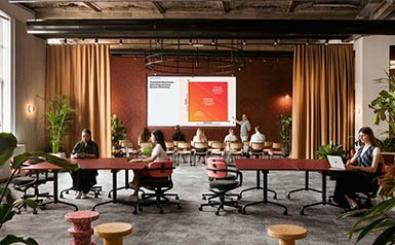It was the defining moment of the 20th century and arguably one of mankind’s greatest ever achievements. Images of Neil Armstrong planting the stars and stripes on the surface of the Moon are etched into the history books, his name alongside Buzz Aldrin and Michael Collins in humanity’s hall of fame.
Last month marked the 50th anniversary of the Apollo 11 mission; an opportunity to remember the politics behind the space race, the drama of launch at Kennedy’s Space Centre, and the bravery of those on board.
But it was also an opportune time to look beyond those headlines. Armstrong’s one small step for man was made possible by giant leaps forward in engineering, science and technology. The successful landing was part of a nine-year programme, employing 400,000 people around the United States, all working together to achieve the impossible.
Nobody embodies this effort more than Margaret Hamilton. Employed by Draper, the first company to be entrusted with a NASA contract related to the Apollo program, she was a computer scientist and lead programmer on the ground-breaking Apollo Guidance Computer.
Armed with exponentially less capacity than your smartphone, this computer was responsible for navigating the astronauts to the Moon and, importantly, bringing them back home again. Hamilton led the team that developed the in-flight software for the command and lunar modules. Describing her remarkable work, she coined the now commonly known discipline, “software engineering.”
At Edelman, we have worked closely with Draper to explore these untold stories, highlighting the extraordinary achievements of 1969 (the company’s Hack The Moon portal showcases the best of these). However, this anniversary is about more than nostalgic reflection.
Despite conflicting messages from the U.S government regarding NASA spending, the next race to the Moon is well underway and Draper is leading the pack, preparing for lunar landings (yes, plural) as soon as 2024.
Like Apollo 11, future missions will revolutionise life back on Earth. The difference this time around is that we are going to the Moon for good.
With a sustained human presence, we face the daunting challenge of providing adequate services to those living and working on the Moon. Investment and development of ground-breaking technologies and capabilities will be required.
The frequency of travel to-and-fro will see single-use spacecraft replaced by autonomous reusable vehicles; an advance that can also be put to work at home as we look to enhance existing transport systems and smart cities.
Once we are there, constraints of the lunar environment mean that things we take for granted on Earth, like electrical power and access to medicine, will need to be generated and delivered in new ways. Mass solar storage systems and robotic-assisted surgery, for example, will revolutionise these sectors.
Finally, for those with strong stomachs and deep pockets, the UK Space Agency recently announced a pledge of £22 million for Europe’s first spaceport in Cornwall.
Whatever impact these next moon shots bring, our current desire to discover new horizons is matched only by those revolutionary men and women 50 years ago.



